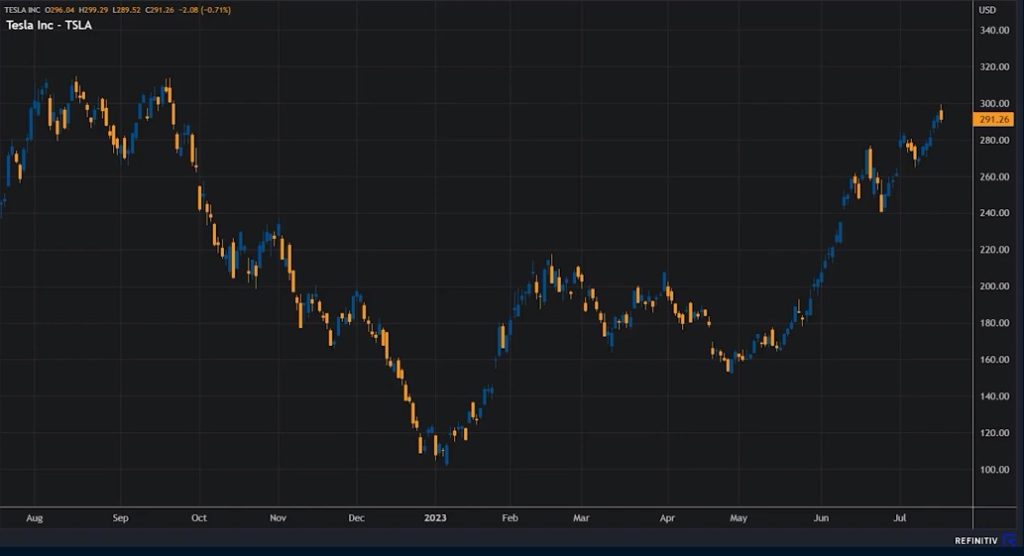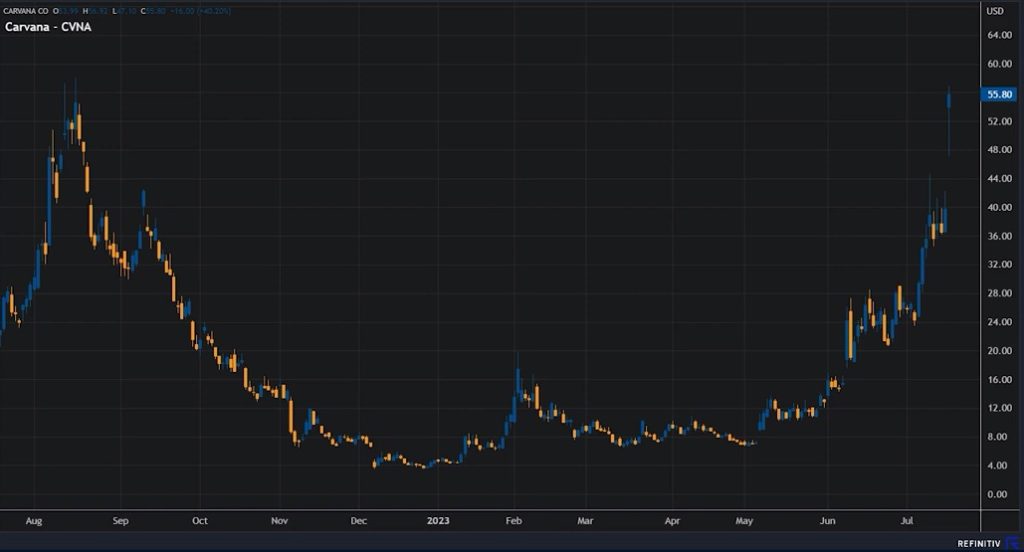Today, I’m diving into the electric vehicle scene, particularly in the US. Ford recently announced a price cut for the F-150 Lightning by a substantial 17%, making the starting price just under $50,000.
This move comes after a series of price hikes since the EV was first tested in April last year. Ford says they’re adapting to stay competitive in a rapidly changing EV market, likely influenced by supply chain issues from the pandemic.
US auto inventory by June had shot up by 71%, hitting its highest since April 2021, with a 53-day supply compared to 38 days last year. Electric vehicle inventory has surged even more, reaching 92.2 days by June, up from 61 last year and 36% in June 2022.

In June, used vehicle values dropped by over 4%, one of the steepest declines since 1997. Wholesale prices typically precede retail drops by 6 to 8 weeks, indicating ongoing weakness in the EV market.
June saw a staggering 29.5% year-on-year decrease in EV prices, with drops of 9% and 17% in January and March, respectively, far outpacing the 3.6% decline in overall used vehicle prices. Second-hand Tesla Model 3 and Model X prices are down by 30% and 21%, respectively, compared to June 2022.

Despite Tesla’s stock soaring 140% this year, other EVs like the Ford Mustang Mach-E, Tesla Model Y, and Hyundai Ioniq 5 are offering significant discounts and immediate delivery, a far cry from buyers lining up to pay full price a year ago.
EVs now hold 7.2% of the market share, up from 4.6% in Q1 2022, but production is outpacing sales. Even with recent price jumps due to Tesla’s discounts, EVs remain 15% pricier than traditional combustion engine cars, despite a potential tax credit of up to $7,500.
The subsidy doesn’t apply to models. There are domestic content requirements, and it can only be fully extended to buyers with a tax liability of at least $7,000. Therefore, the average TV price is still around $55,500, which is a $7,000 premium to your average normally assumed gas. Tesla has added a significant amount of capacity into what was already a highly competitive environment.
For example, they have capacity in Germany and Texas to produce the Model Y. This resulted in a much more competitive environment, causing them to lose market share. They are now discounting aggressively. This is not just affecting Tesla, as Ford also mentioned on Monday. Tesla reports to the market later today, which is Wednesday.

Moving on to another electric vehicle maker, specifically Nikola with the ticker N.K. They are electric truck makers with a market cap of $1.8 billion. Short interest is 20% of the free float. Their shares are up 17% year to date. Last week they announced a deal with hydrogen gas producer Biontech to purchase low carbon hydrogen and ten transports.
This deal involves BioNtech buying up to 50 of Nikola’s electric vehicles over the next five years. Financial terms were not disclosed. This announcement caused the shares to jump by 61% in a single day on a trading volume of 317 million shares. This raises questions about their financial situation and capital structure.
Will there be a secondary share offering? In Q1, the company generated revenues of $11 million, up from $2 million in 2022. Operating losses were $151 million, similar to 2020. It’s estimated that Nikola’s operating cash needs are $1.1 billion through 2025, while they currently have less than $200 million in net cash.

Another struggling company in the auto industry is Carvana, with the ticker CV, known for selling vehicles via a joint venture. Their market cap is $7.5 billion, with a staggering short interest of 44% of the free float. Before today, their shares were up 740% year to date. Today, the stock is up about 25%, having been even higher earlier.
Their capital structure seems troubled. The share price, which was $360 in 2021, dropped to less than $5 last December. The company has a junk credit rating with $6.5 billion in long-term debt. Their forecasted loss for this year is about $44 million. Despite attempts to negotiate debt swaps, the company has never been profitable.
Management is forecasting a positive adjusted EBIT for Q2 of $50 million, but some analysts doubt the sustainability of this. Carvana brought forward their Q2 earnings report today and announced a debt reduction deal of $1.2 billion and a distribution agreement to issue $1 billion of stock.
The stock price surged pre-market and continues to rise. It seems they’re swapping debt for equity. It’ll be interesting to see at what price this stock enters the market. In any case, I wouldn’t buy these stocks. Shorting them is extremely risky. If you’re uncertain about the valuation, it’s best to stay away.












